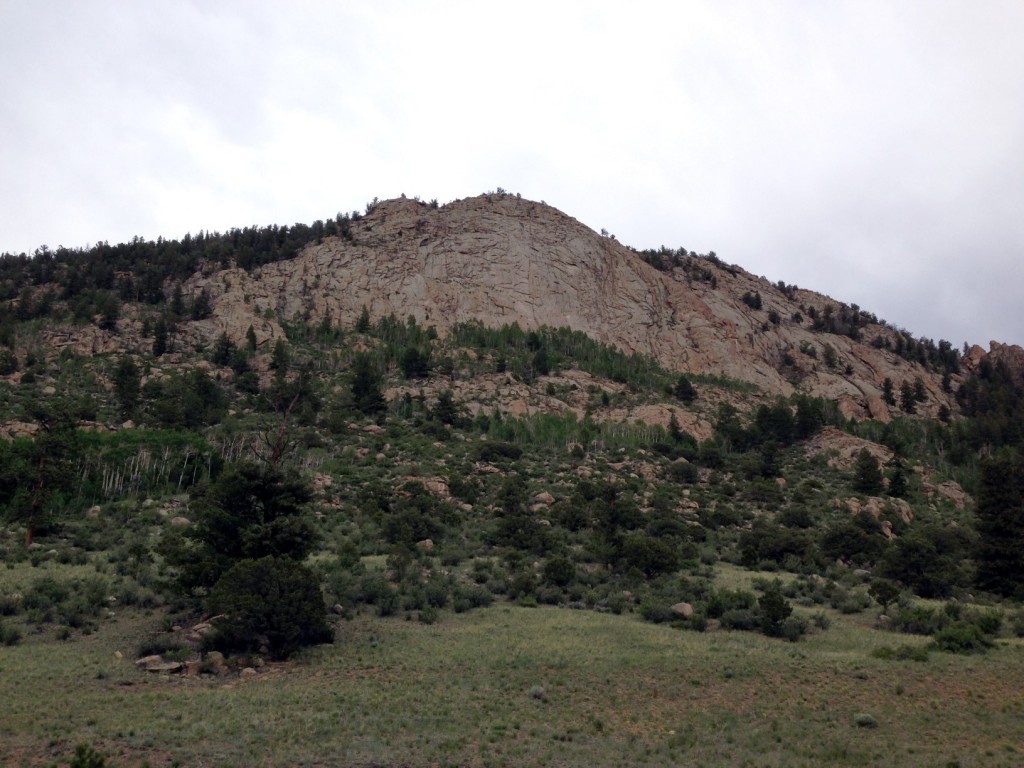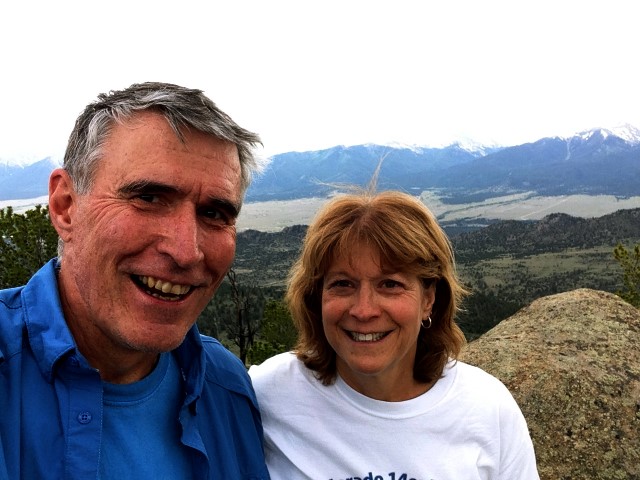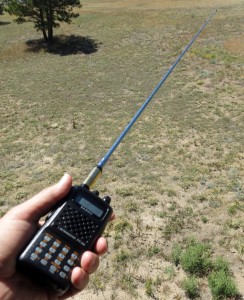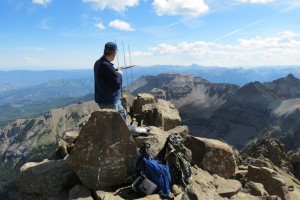Posts Tagged ‘VHF’
 This Spewed Out of the Internet #28
This Spewed Out of the Internet #28
 More important
More important things have spewed forth from the interwebz:
HamRadioNow interviews the Ham Hijinks guys and has the nerve to actually publish the video. Later the Hijinks crew posted this article about changes being made to Field Day.
Baofeng is going to change its name. Or is this just another Ham Hijinks article?
WE2F writes: 146.52 Reasons to Monitor VHF Simplex but whatever you do, do not use 146.52 MHz on Field Day. Mike AD5A posts Why Operate QRP from Summits? The FCC kicks the butt of a cell phone jammer manufacturer, to the tune of $34.9M and also fines a couple of 14.313 MHz problem children.
A Broadband Over Powerline (BPL) provider bites the dust. Did I mention that it is a really dumb idea to transmit bits over AC power lines?
I did a little explaining about those antenna connectors on handheld radios. Randy (K7AGE) has a neat video showing some basic 2m FM portable operating.
I knew it: Digital is overrated and vinyl is making a comeback. Really.
Due to popular demand, I updated the VHF QRP page. Yes, some radio hams do operate QRP above 50 MHz…apparently for the same reasons that people operate HF QRP. Which is to say we really don’t know why.
I also found that the domain name for the Colorado 14er Event was broken, so I fixed it. See ham14er.org This event is the most fun you can have dorking around with radios in the Colorado mountains. Also, be sure to check out these operating tips.
73, Bob K0NR
 Making Plans for the Colorado 14er Event
Making Plans for the Colorado 14er Event
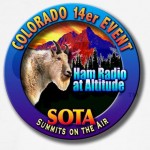 The Colorado 14er Event (Aug 3) is less than a month away so it is time to get ready. This event was born out of the basic observation that many hiking hams were taking along their radios (typically, a VHF/UHF handheld) when they climbed the Colorado 14,000 foot mountains. So we thought “let’s all climb on the same day and see who we can contact.” The typical 2m FM contacts have expanded to other frequencies and modes, including the high frequency bands, with the potential for worldwide propagation. We’ve also embraced the Summits On The Air (SOTA) program, opening up over 1700 summits in Colorado for ham radio activity.
The Colorado 14er Event (Aug 3) is less than a month away so it is time to get ready. This event was born out of the basic observation that many hiking hams were taking along their radios (typically, a VHF/UHF handheld) when they climbed the Colorado 14,000 foot mountains. So we thought “let’s all climb on the same day and see who we can contact.” The typical 2m FM contacts have expanded to other frequencies and modes, including the high frequency bands, with the potential for worldwide propagation. We’ve also embraced the Summits On The Air (SOTA) program, opening up over 1700 summits in Colorado for ham radio activity.
How can you join in the fun? The most active way to participate is to operate from a summit. If you are interested in climbing 14ers, then you may want to operate from one of the 54 14,000 foot mountains. In my opinion, all of the 14ers are strenuous hikes, so be sure to assess your ability and check out the challenge of any summit you attempt. There are a few that you can drive up, Pikes Peak, Mount Evans and Mount Bross (4WD only). Note that a “non-motorized final ascent” is required if you want to qualify as a SOTA activation, which is encouraged. See this web page for some great tips on activating a SOTA peak. If you want to try something less difficult, consider one of the easier SOTA peaks (more than 1700 in Colorado). Everyone can find a SOTA peak that fits their particular hiking ability.
If you can’t get out and operate from a summit, you can still have fun trying to contact the radio hams on the various summits. There will be quite a bit of activity on 2m FM, starting with 147.42 MHz and moving up from there using the standard Colorado band plan. You’ll want to be roughly within “line of sight” to as many peaks as possible for working them on VHF. Many radio operators will be on the HF bands, too. See the recommended frequency list here.
Summits On The Air has some great infrastructure that we can use during the event. The SOTAwatch web site is using for “spotting” SOTA stations so that you know who is on the air. Spotting yourself is encouraged and can be done from many peaks using a mobile phone. SOTA Goat is a great iOS app for making and tracking spots.
Take a look at this posting for some additional SOTA resources. There’s quite a bit of information out there so take advantage of it. Remember, the Colorado 14er Event is based on the fundamental purpose of ham radio: to have fun messing around with radios. But be careful out there, we don’t want anyone to get hurt.
Questions, comments, let me know.
73, Bob K0NR
Disclaimer: Climbing mountains in Colorado can be dangerous. Only you are responsible for your safety. In particular, be very aware of the lightning danger if you are hiking above treeline.
 SOTA Activation: W0C/SP-089 Unnamed Summit
SOTA Activation: W0C/SP-089 Unnamed Summit
With the summer season definitely here, Joyce (K0JJW) and I climbed W0C/SP-089, an unnamed summit east of Buena Vista near Trout Creek Pass, for a Summits On The Air activation. This summit is also referred to by its elevation: 10525. The mountain is quite majestic with a large rock face that rock climbers enjoy climbing.
To reach the summit, we drove a 4WD truck from Trout Creek Pass on Forest Service Road 311, connecting to FS Road 373. Four wheel drive is required for this road due to the steep sections, which may not be passable in muddy conditions. You can also approach from the Buena Vista side, see the San Isabel Forest Service Map. From 373 we took a side road (shown in blue on the map below) that is not always shown on maps. I believe it is marked 373A but I am not sure. We parked the truck at the lat/lon shown.
From there we hiked a non-technical route to the west of the summit, working our way up through the draw shown on the map. There were a few faint game trails here and there but mostly it was some challenging bushwhacking up that draw. The willows and sticker bushes made us glad that we had long pants on. Also, there was quite a bit of downed timber to step over. The route got quite a bit easier once we got to the top of the draw, but still no trail. The elevation gain was only 1100 feet but it felt like a lot more work than that.
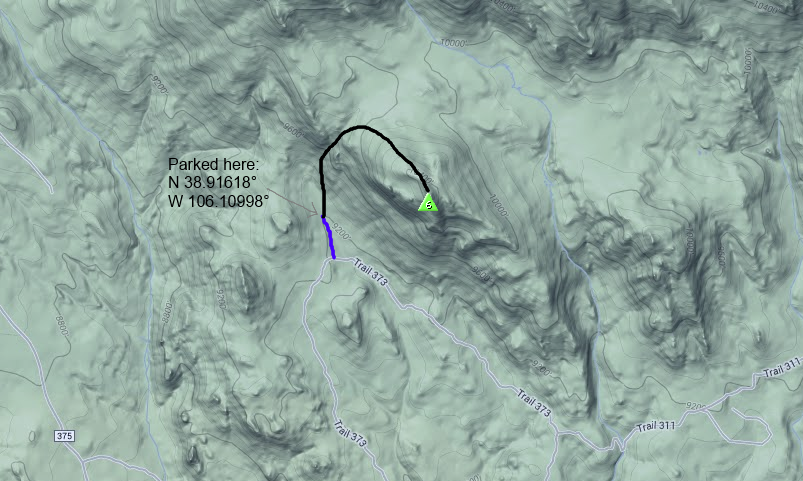 As we neared the summit, I heard Bob (W0BV) calling me on 146.52 MHz. I had put out an email alert to some of the hams in the area so Bob and some others knew I was going to be out climbing. Once I got to the summit, I contacted Bob (W0BV) and quickly had a mini-pileup with several stations calling me. Mark (KF5WCY) visiting from TX gave me a call, followed by Carl (K5UK) near Mount Yale. Then I worked Jim (KD0MRC) in Buena Vista and Larry (KL7GLK) in Leadville. Thanks, guys, for getting on the air and contacting me!
As we neared the summit, I heard Bob (W0BV) calling me on 146.52 MHz. I had put out an email alert to some of the hams in the area so Bob and some others knew I was going to be out climbing. Once I got to the summit, I contacted Bob (W0BV) and quickly had a mini-pileup with several stations calling me. Mark (KF5WCY) visiting from TX gave me a call, followed by Carl (K5UK) near Mount Yale. Then I worked Jim (KD0MRC) in Buena Vista and Larry (KL7GLK) in Leadville. Thanks, guys, for getting on the air and contacting me!
I used my Yaesu FT-60 handheld transceiver and a 1/2-wave vertical antenna for these contacts. While I had my 3-element Yagi antenna with me, I did not bother to set it up.
My spouse and hiking companion Joyce (K0JJW) and I have worked out a standard SOTA activating procedure. As we get close to the summit, she stops below the activation zone and I continue to the top. Then I work her on 146.52 MHz which guarantees a successful activation. It is possible to get skunked on 2m fm in the backcountry, so this is good insurance. This one QSO does not result in any SOTA points, since the rules require a minimum of four contacts for activation points. Next, Joyce joins me on the summit and we work whoever is out there. Lately, I’ve had pretty good luck getting at least 4 contacts on 2m fm. On the descent, she stays on the summit and I go down the mountain and work her once I am outside of the activation zone. That way, I am able to work the summit, too. Then she leaves the summit, catches up with me and we descend the rest of the way together.
For more information on VHF SOTA activations, see How To Do a VHF SOTA Activation.
73, Bob K0NR
 The One Frequency You Should Never Use on Field Day
The One Frequency You Should Never Use on Field Day
At the local radio club meeting, I encouraged everyone to get on the air during Field Day, which led to this conversation:
New Tech: I just have a 2 meter fm radio. Can I still make Field Day contacts?
Me: Sure, VHF contacts are encouraged during Field Day.
New Tech: So I just call on 146.52 MHz and see who’s out there?
Me: Well, no, the 2m fm calling frequency is not allowed for Field Day.
New Tech: Really? We can’t use any of the calling frequencies we learned during our license class?
Me: Well, no, all of the other standard calling frequencies are fine, just 146.52 MHz is prohibited.
New Tech: That seems really dumb.
Me: No comment.
Complete Field Day information is here : http://www.arrl.org/field-day
73, Bob K0NR
 How To Do a VHF SOTA Activation
How To Do a VHF SOTA Activation
The Summits On The Air (SOTA) program has really taken off in North America. SOTA originated in the UK in 2002, so it took a little while for it to make it across the Atlantic to this continent. The basic idea of SOTA is to operate from a designated list of summits or to work other radio operators when they activate the summits. The list of designated summits are assigned scoring points based on elevation and there are scoring systems for both activators (radio operators on a summit) and chasers (radio operators working someone on a summit). See this blog posting for links to tons of information.
Most of the operating is on the HF bands but there are quite a few VHF contacts on SOTA. Obviously, HF has the advantage of being able to work longer distances without too much trouble. Typically, the HF station is your classic portable QRP rig, portable antenna and battery power. (A portable power source is required and the use of fossil fuels is prohibited.) Being a VHF enthusiast, I prefer the challenge of making contacts above 50 MHz, so my SOTA contacts are usually on 2 Meters or 70 cm.
My basic VHF SOTA station is a handheld FM transceiver with a ½-wave telescoping antenna. The standard rubber duck on a handheld transceiver (HT) is generally a poor radiator so using a ½-wave antenna is a huge improvement. This simple station is an easy addition to my normal hiking routine…just stuff the HT and antenna in my backpack along with the usual hiking essentials and head for the summit.
To count as a SOTA activation, you need to make a minimum of 4 contacts from the summit. If I am hiking a summit within range of a major city, I can usually just make some random contacts by calling CQ on the National Simplex Calling Frequency, 146.52 MHz. However, operating in more remote areas requires a little more planning. I’d hate to hike all that way and come up short on the required contacts, so I use a few tactics to rustle up some VHF contacts. Of course, I will post my planned activation on the SOTAwatch site in advance, to let people know that I’ll be on the air. While this goes out worldwide, it may not reach the right radio amateurs within VHF range. The next thing I do is send an email to some of VHF-equipped hams I know will be within range. Many people respond to such a request to work a summit, even if they are active in SOTA. When on the summit, my first call is on 146.52 MHz or some other popular simplex frequency. If I don’t raise anyone there, I will make a call on a few of the 2M repeaters in the area to see if someone will come over to “five two” to make a contact. SOTA does not recognize repeater contacts but it is OK to solicit simplex contacts using a repeater. These techniques and a little patience have always gotten me at least four contacts, and usually quite a few more.
The omnidirectional antenna of the basic VHF SOTA station will make some contacts, adding some antenna gain can really help your signal. There are a number of compact directional antennas that are easy to take hiking. Elk Antennas makes a log-periodic antenna that covers 2 Meters and 70 cm. Another popular antenna is the 2 Meter / 70 cm Yagi antenna made by Arrow Antenna. These antennas are lightweight and assemble/dissemble easily, which is important to hiking radio operators.
So far, most of the SOTA VHF activity in North America is on on 2m FM, the utility mode. Everyone seems to have a 2m HT, so tossing it in a backpack and heading out is a natural thing to do. Using my FT-817, I have made some VHF contacts on CW and SSB. See this posting about a recent SSB activation. These modes are much efficient than FM and the station on the other end is likely to be a big weak-signal station. Nothing like a big gun station with huge antennas to help pull your QRP signal out of the noise! I expect the use of CW and SSB to increase on VHF as SOTA becomes more popular. While FM activity uses vertical polarization (antenna elements are vertical), most SSB/CW activity uses horizontal polarization (antenna elements are horizontal).
Summits On The Air is a great way to take ham radio outdoors. So get off the couch, find a summit and have some fun with ham radio.
See my other SOTA postings here.
73, Bob K0NR
 Big vhf haul from IO84em
Big vhf haul from IO84em
Its not often I get a bumper crop of contacts on the UKAC series but 2m offers probably the best opportunity. Last weeks 6m contest gave just a handful of contacts but last night 26 contacts that ranged from Perthshire in the north to the south coast. I usually don’t hang about past about 21:30 anyway and as conditions were deteriorating I decided to come home and sort out the log.
Operating /p with just 10w and a 5 ele beam means I can go out with the minimal equipment but I was very jealous of the Wasdale Mountain Rescue truck who had not read the memo about Sandwith being ‘my spot’. Not only had they beat me to the best spot but they had a Clark pump up mast that looked great. I’ll bet their best dx was worse than mine ![]()
All in all a good evenings work. Made better by the warm and wind free evening. I’m beginning to think I’ll wake up in a bit.
 There’s a new radio hobby magazine in town!
There’s a new radio hobby magazine in town!
Recently, a number of hobby radio magazines have either retired, or have merged into a digital mix of several. Filling that void is the new The Spectrum Monitor, a creation of Ken Reitz KS4ZR, managing editor for Monitoring Times since 2012, features editor since 2009, columnist and feature writer for the MT magazine since 1988. Ken offers this digital, radio communications magazine monthly. The web site is at http://www.thespectrummonitor.com/
Ken, a former feature writer and columnist for Satellite Times, Satellite Entertainment Guide, Satellite Orbit magazine, Dish Entertainment Guide and Direct Guide, is also contributing editor on personal electronics for Consumers Digest (2007 to present). He is the author of the Kindle e-books “How to Listen to the World” and “Profiles in Amateur Radio.”
The Spectrum Monitor Writers’ Group consists of former columnists, editors and writers for Monitoring Times, a monthly print and electronic magazine which ceases publication with the December, 2013 issue. Below, in alphabetical order, are the columnists, their amateur radio call signs, the name of their column in The Spectrum Monitor, a brief bio and their websites:
Keith Baker KB1SF/VA3KSF, “Amateur Radio Satellites”
Past president and currently treasurer of the Radio Amateur Satellite Corporation (AMSAT). Freelance writer and photographer on amateur space telecommunications since 1993. Columnist and feature writer for Monitoring Times, The Canadian Amateur and the AMSAT Journal. Web site: www.kb1sf.com
Kevin O’Hern Carey WB2QMY, “The Longwave Zone”
Reporting on radio’s lower extremes, where wavelengths can be measured in miles, and extending up to the start of the AM broadcast band. Since 1991, editor of “Below 500 kHz” column forMonitoring Times. Author of Listening to Longwave (http://www.universal-radio.com/catalog/books/0024u.html). This link also includes information for ordering his CD, VLF RADIO!, a narrated tour of the longwave band from 0 to 530 kHz, with actual recordings of LW stations.
Mike Chace-Ortiz AB1TZ/G6DHU “Digital HF: Intercept and Analyze”
Author of the Monitoring Times “Digital Digest” column since 1997, which follows the habits of embassies, aid organizations, intelligence and military HF users, the digital data systems they use, and how to decode, breakdown and identify their traffic. Web site: www.chace-ortiz.org/umc
Marc Ellis N9EWJ, “Adventures in Radio Restoration”
Authored a regular monthly column about radio restoration and history since 1986. Originally writing for Gernsback Publications (Hands-On Electronics, Popular Electronics, Electronics Now), he moved his column to Monitoring Times in January 2000. Editor of two publications for the Antique Wireless Association (www.antiquewireless.org): The AWA Journal and the AWA Gateway. The latter is a free on-line magazine targeted at newcomers to the radio collecting and restoration hobbies.
Dan Farber ACØLW, “Antenna Connections”
Monitoring Times antenna columnist 2009-2013. Building ham and SWL antennas for over 40 years.
Tomas Hood NW7US, “Understanding Propagation”
Tomas first discovered radio propagation in the early 1970s as a shortwave listener and, as a member of the Army Signal Corps in 1985, honed his skills in communications, operating and training fellow soldiers. An amateur Extra Class operator, licensed since 1990, you’ll find Tomas on CW (see http://cw.hfradio.org ), digital, and voice modes on any of the HF bands. He is a contributing editor for CQ Amateur Radio (and the late Popular Communications, and CQ VHF magazines), and a contributor to an ARRL publication on QRP communications. He also wrote for Monitoring Times and runs the Space Weather and Radio Propagation Center at http://SunSpotWatch.com. Web site: http://nw7us.us/ Twitter: @NW7US YouTube: https://YouTube.com/NW7US
Kirk Kleinschmidt NTØZ, “Amateur Radio Insight”
Amateur radio operator since 1977 at age 15. Author of Stealth Amateur Radio. Former editor,ARRL Handbook, former QST magazine assistant managing editor, columnist and feature writer for several radio-related magazines, technical editor for Ham Radio for Dummies, wrote “On the Ham Bands” column and numerous feature articles for Monitoring Times since 2009. Web site: www.stealthamateur.com.
Cory Koral K2WV, “Aeronautical Monitoring”
Lifelong air-band monitor, a private pilot since 1968 and a commercial pilot licensee since 1983, amateur radio licensee for more than 40 years. Air-band feature writer for Monitoring Times since 2010.
Stan Nelson KB5VL, “Amateur Radio Astronomy”
Amateur radio operator since 1960. Retired after 40-plus years involved in mobile communications/electronics/computers/automation. Active in radio astronomy for over twenty years, specializing in meteor monitoring. Wrote the “Amateur Radio Astronomy” column for Monitoring Timessince 2010. A member of the Society of Amateur Radio Astronomers (SARA). Web site: www.RoswellMeteor.com.
Chris Parris, “Federal Wavelengths”
Broadcast television engineer, avid scanner and shortwave listener, freelance writer on federal radio communications since 2004, wrote the “Fed Files” column for Monitoring Times.http://thefedfiles.com http://mt-fedfiles.blogspot.com Twitter: @TheFedFiles
Doug Smith W9WI, “The Broadcast Tower”
Broadcast television engineer, casual cyclist and long distance reception enthusiast. “Broadcast Bandscan” columnist for Monitoring Times since 1991. Blog:http://americanbandscan.blogspot.com Web site: http://w9wi.com
Hugh Stegman NV6H, “Utility Planet”
Longtime DXer and writer on non-broadcast shortwave utility radio. Former “Utility World” columnist for Monitoring Times magazine for more than ten years. Web site: www.ominous-valve.com/uteworld.html Blog: http://mt-utility.blogspot.com/ Twitter: @UtilityPlanet YouTube: www.youtube.com/user/UtilityWorld
Dan Veeneman, “Scanning America”
Software developer and satellite communications engineer writing about scanners and public service radio reception for Monitoring Times for 17 years. Web site: www.signalharbor.com
Ron Walsh VE3GO, “Maritime Monitoring”
Retired career teacher, former president of the Canadian Amateur Radio Federation (now the Radio Amateurs of Canada), retired ship’s officer, licensed captain, “Boats” columnist and maritime feature writer for Monitoring Times for eight years. Avid photographer of ships and race cars.
Fred Waterer, “The Shortwave Listener”
Former “Programming Spotlight” columnist for Monitoring Times. Radio addict since 1969, freelance columnist since 1986. Fascinated by radio programming and history. Website: http://www.doghousecharlie.com/
Thomas Witherspoon K4SWL, “World of Shortwave Listening”
Founder and director of the charity Ears To Our World (http://earstoourworld.org), curator of the Shortwave Radio Archive http://shortwavearchive.com and actively blogs about shortwave radio on the SWLing Post (http://swling.com/blog). Former feature writer for Monitoring Times.
